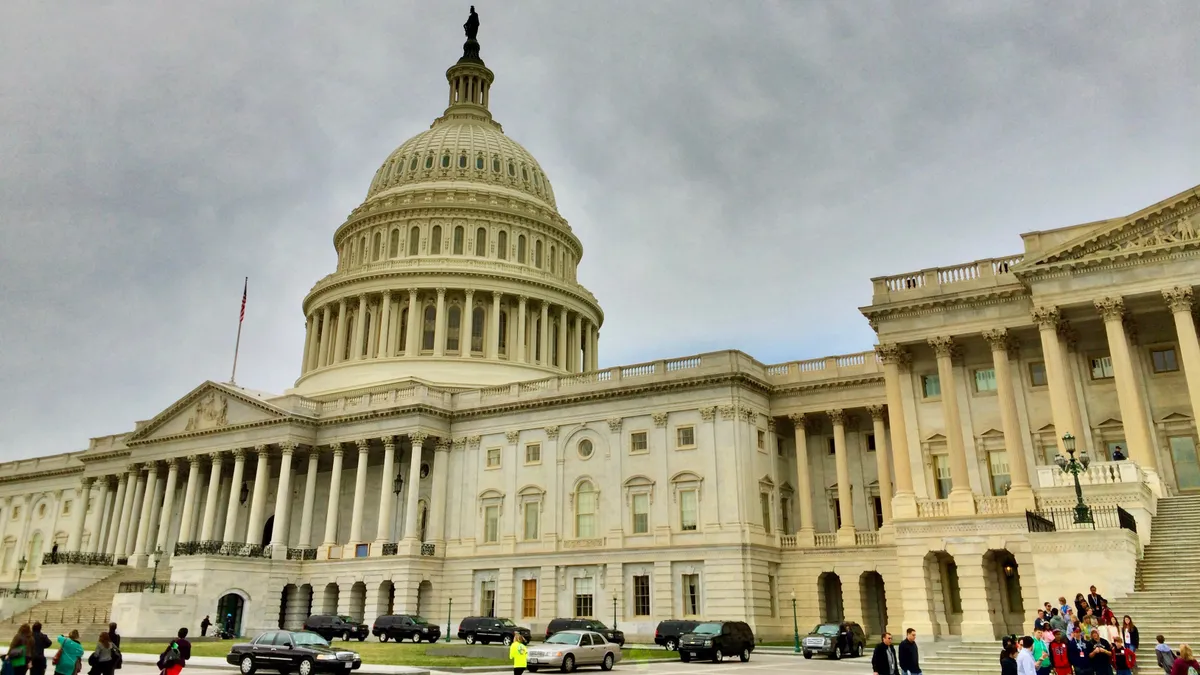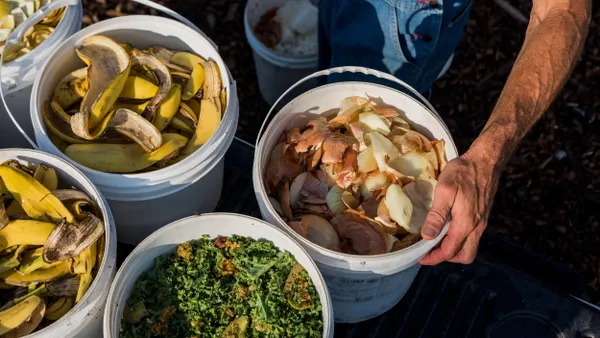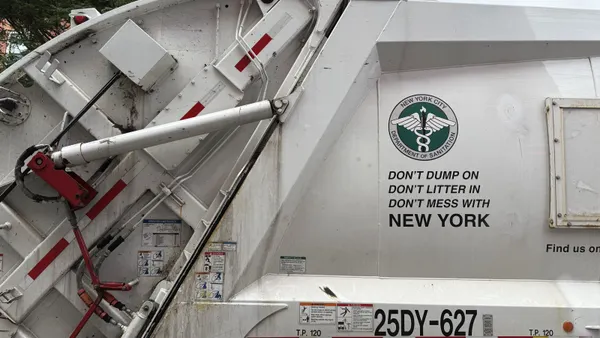Dive Brief:
- The federal Leading Infrastructure For Tomorrow’s America (LIFT America) Act, introduced March 11, calls for a wide array of infrastructure improvement proposals, including renewable energy projects that could indirectly help boost the biogas sector, according to industry experts.
- The bill names landfill gas, biomass and municipal solid waste under the definition of “renewable energy resources,” meaning technologies such as combustion and anaerobic digestion would be included as renewables in the clean energy portion of the bill, according to the National Waste & Recycling Association (NWRA).
- The bill joins several other recent or soon to be reintroduced federal bills with landfill gas implications, including the GREEN Act, Clean Energy for America Act and the CLEAN Future Act.
Dive Insight:
The inclusion of biogas-related terms in the bill is a brief but notable way of keeping it in the renewable energy conversation as Congress works to push several climate change policies through this legislative session, stakeholders said.
The LIFT America Act, introduced by all 32 Democratic members of the House Committee on Energy and Commerce, includes a wide array of infrastructure improvement proposals totaling $312 billion in energy efficiency, drinking water, broadband and healthcare projects. It proposes spending $69.9 billion for energy infrastructure projects, including updating the electric grid to accommodate more renewable energy and to make the grid more resilient. The bill also includes block grants and loans for energy efficiency and renewable energy projects, including programs for municipalities, public schools and low-income communities.
The bill is not a waste or biogas bill and makes only a brief mention of renewable energy from biogas or anaerobic digestion, said Brandon Wright, vice president of communications for NWRA.
However, their inclusion is important because it provides “strong opportunity for industry growth” and shows that landfill gas has a place in the Biden administration’s overall goals of tackling climate change, added Michael Bakas, executive vice president of distributed energy systems at Ameresco, a renewable energy company that works on landfill gas-to-energy plants.
The bill also mentions offering a distributed energy loan program that would be available for municipal, tribal or investor-owned electric utility entities. Biogas developers would not be eligible for these loans, but could work in partnership with utility companies that have access to the loans, according to the American Biogas Council (ABC).
The bill also calls for investing $2.7 billion in brownfield redevelopment through the U.S. EPA, which Bakas called a potential opportunity for future renewable energy investments. “There are many successful case studies for brownfield redevelopment, including the co-location of biogas capture facilities and large scale solar arrays,” he said in a statement.
Stakeholders said it’s notable that all Democratic committee members introduced the bill, signaling unified confidence for making major infrastructure improvements, but a spokesperson from ABC said it remains to be seen whether the bill will be able to make it through the Senate or if certain provisions may end up as part of a different infrastructure-related bill.
Stakeholders are also keeping tabs on other bills with renewable energy implications. One is the Growing Renewable Energy and Efficiency Now (GREEN) Act, which includes several provisions extending production tax credits for electricity produced from renewable resources such as landfill gas. It also calls for extending investment tax credits for biogas properties. ABC supports the bill.
Another is the Clean Energy for America Act, a bill from 2019 that Senate Democrats say they are reworking to include technology-neutral incentives instead of specifically naming wind and solar credits. The bill has not yet been reintroduced, but Ameresco and ABC say they will monitor the bill to see whether it could have implications for landfill gas incentives.
The Climate Leadership and Environmental Action for our Nation’s (CLEAN) Future Act, which aims to achieve net zero greenhouse gas emissions by 2050, names several waste and recycling efforts to help reach that goal, including using biomass as a "clean energy source." The Global Alliance for Incinerator Alternatives (GAIA) criticized the CLEAN Future bill's classification of combustion technology as clean energy, saying in a statement that such facilities contribute to greenhouse gas emissions and other air pollution. Landfills remain the dominant source of greenhouse gas emissions in the waste sector.
Even if these bills do not pass this legislative session, Bakas said commercial and industrial companies are facing more pressure to better manage environmental risks, and renewable energy bills will be a key piece of the puzzle in 2021 and beyond. “With a heightened demand for Environmental, Social and Governance reports, and with the Biden Administration’s climate plan, we foresee additional legislation in support of a rapid shift towards clean energy.”















